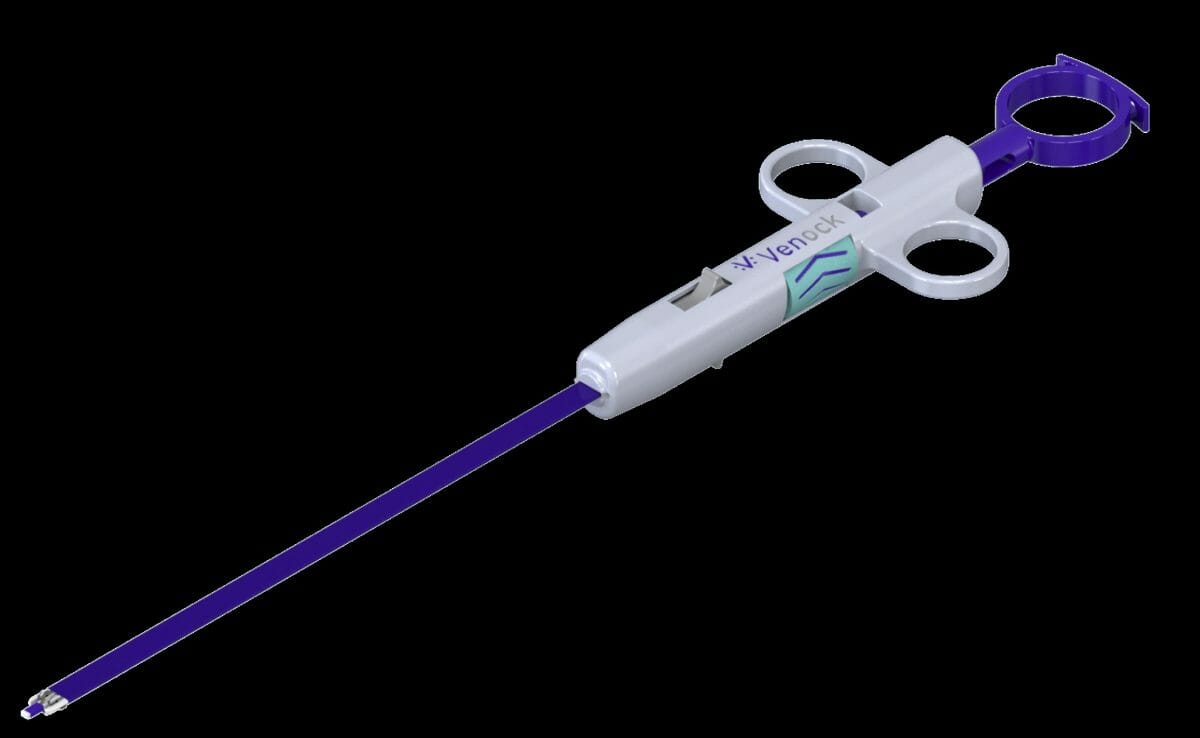Primarily because of patient safety, structural heart therapies have been trending more towards transcatheter venous access. Additionally, with associated therapeutic devices becoming increasingly complex (i.e. collapsible and deployable structures), the venous access sites necessary to pass these devices are getting larger. Some are up to and well beyond 30 Fr (10 mm). Such large bore venous access sites (e.g. for the Leadless Pacemaker) are becoming increasingly prevalent in cathlabs in the US and EU.
Post therapy, these venous sites are typically closed using manual compression. This process begins with an individual physically pressing the access site to attain initial blood stoppage, as shown in Figure 1. For large bore sites, the process can take 30 and even up to 60 minutes. Subsequently, the patient is then bedridden with a tight compression bandage (or even a sandbag) over the groin area and remains in this state for 6 to 8 hours, requiring a bladder catheter and pain medication.
This process needlessly consumes hospital personnel time, takes up hospital beds, dramatically slows down discharge, and is incredibly burdensome for the patient, typically leaving them with massive hematoma and an increased risk for blood clots. Furthermore, because of the time taken to recover from closure, the number of therapies performed per day in the cathlab is significantly reduced, requiring patients to wait longer for their procedures.
The Venock large bore venous closure device, shown in Figure 2, is the first and only device that will singularly close large bore (>8 mm, 24 Fr) access sites in the femoral vein following a transcatheter procedure. This device provides significant time savings by attaining full closure in just one minute, removing the need for the 6 to 8 hours of bedrest, and allowing for near immediate patient ambulation which will result in significantly faster discharge.
Economic evaluation study shows enormous potential
Venock has conducted a comprehensive economic evaluation study (link to White Paper below) which demonstrates that using the Venock closure device, which can save well over 30 minutes per patient in the Cathlab, will result in cost savings of over $1,716 per procedure. In a mid-sized clinic with 2,000 patients per year this can translate to more than $3.4 million savings annually.
Additionally, reduced procedure and recovery time will increase same-day discharge, potentially saving $6,290 per patient. The economic study shows that reduction of just one day of hospital stay per case can improve the cathlab average margin from -1% to 6%, driving cathlab profitability.
Overall, the Venock device will allow for more efficient Cathlab capacity utilization and higher patient turnover, while drastically saving time and cost during recovery.

